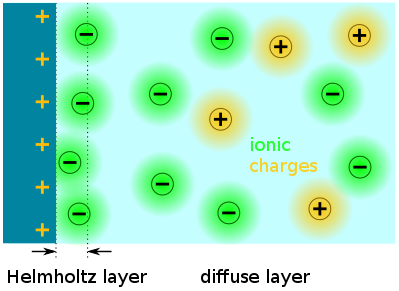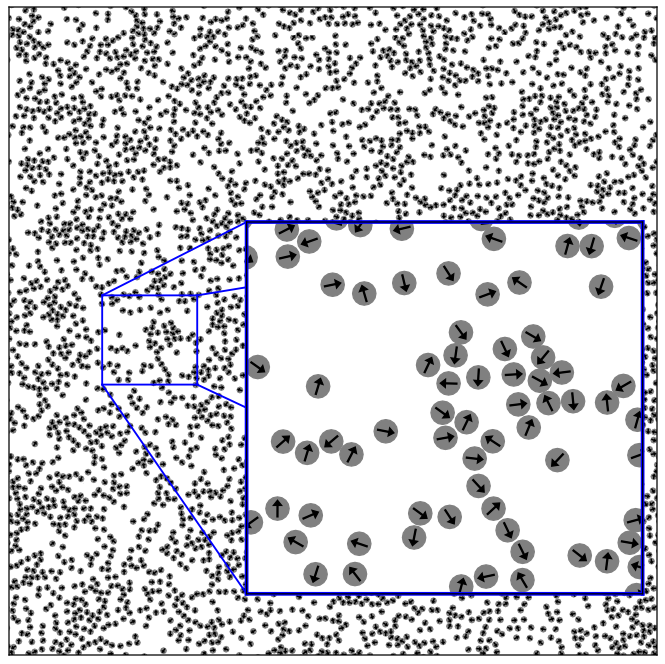Research interests
My group works in the field of soft condensed matter and statistical physics and we are particularly interested in electrolyte systems and biological modeling. We have a strong background in studying structure and ordering transitions in complex many-body systems and in the development and application of classical density functional theory (DFT).
In particular, we study
- charged colloidal and ionic particles, ionic fluids, and the build of electric double layers (EDLs), exemplary shown in Figure 1,
- active Brownian particles and biological swimmers that interact with their environment, an example for active Brownian disks is shown in Figure 3,
- hard particles and their phase transitions,
- classical density functional theory (DFT) and its applications,
- power functional theory (PFT), a full non-equilibrium time-dependent DFT formalism,
- energy storage in EDLs with impact to supercapacitive technologies like supercapacitors, capacitive mixing (Capmix) for blue-energy harvesting, and capacitive deionization (CDI) to recover and desalinate water; a model supercapacitor is shown in Figure 2;
- underscreening, overscreening, and structural transitions in EDLs,
- thermal effects like the thermal voltage rise and thermocapacitive energy conversion,
- thermodynamic cycles and new heat-to-current conversion technology,
- interfaces and phase separations, driven colloidal suspensions, clustering, nucleation, percolation,
- the physics of food preparation in the kitchen,
- and much more.

|
Our research is supported by the German Research Foundation (DFG) by a project on
Capacitive density functional theory for
structure and screening in ionic fluids and electric double layers
with applications in sustainability. Project description via gepris.dfg.de |

Figure 1. Sketch of an electric double layer (EDL). A positively charged flat electrode is in contact with an electrolyte solution, where the mobile ionic charges arrange themselves to screen the charges on the electrode. One can distinguish between a close layer of counter ions (Helmholtz layer) and a diffuse layer.

Figure 2. Sketch of multi-scale supercapacitor model. Typical length scales are (from the left to the right) 0.3 nm particle size, 1-10 nm pore width, 1 mm electrode size.

Figure 3. Snapshot of a system of active Brownian disks. The magnification window shows structures that originate form the disk's activity.
© A. Härtel (2023)


